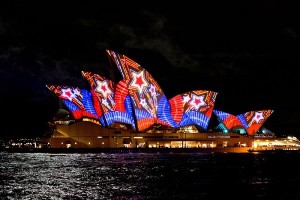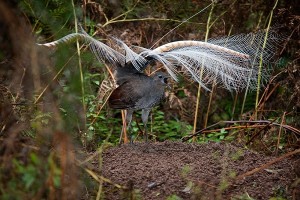Last updated on May 5th, 2023
53. If you want to play poker in Australia, remember that when playing slot machines, the payout percentage is less than 100%. This means that you will eventually lose all your money if you continue to play for a long time.
54. The Opera House is an architectural wonder. If you open the sails of the house and combine them, a perfect sphere would be formed. And the inspiration for this kind of design came to its architect while he was eating an orange. If this might interest you, note that its roof weighs a whopping 161,000 tons.

55. The world’s first seat belt law was put in place in 1970, in the state of Victoria, Australia, making the wearing of a seat belt compulsory for drivers and front-seat passengers.
56. Captain James Cook was the first to land in Australia’s east coast in 1770. And the British with an intention to establish penal colony returned with 11 ships in 1788. The French also tried to claim Australia but fell short of a few days as the British had already claimed their hold of the land.
Legalization of euthanasia, cartoonists, volcanoes, living fossil
57. In the 1990s, the Northern Territory of Australia legalized euthanasia, but it was overturned by a bill passed at the federal level.
58. In Australia, between 1838 and 1902, it was illegal to swim at public beaches during the day.
59. Australia lost its Prime Minister Harold Hold in 1967 when he went for a swim and never returned back. The event was later referred as ‘the swim that needed no towel’.
60. It is interesting for the kids to know that on 17th July 1924, the world’s first society of cartoonists was formed in Sydney, Australia. It was named “the Black and White Artists’ Society”.

61. Australia is the third nation behind the U.S. and Russia to successfully launch a satellite into orbit.
62. Australia is the only continent without an active volcano. Interestingly, it hosts one of the world’s largest extinct volcanoes, the Tweed Volcano.
63. Australia is also famous for an enormous depiction of an Indigenous man carved in the desert. The drawing which is over 4 kilometers (2.5 mi) long can be seen in Australia. It is a tourist spot for over a decade now.
64. The Great Barrier Reef in Australia is the largest organic construction on earth.
65. The length of a baby kangaroo at the time of its birth can be between 1 and 2 centimeters.
66. There are over 60 different species of kangaroos and 1500 plus species of spiders in Australia.
67. And Kangaroos can survive without water for months. They can also dig wells for water, which can be 3-4 feet deep.
68. Ever heard of a living fossil? Queensland is home to ‘lungfish’, a living fossil from the Triassic period 350 million years ago.
69. Western Australia is currently the worlds largest producer of gold.
Facts about Australian sportsperson, Canberra, churches, railway track
70. Over 40% of Australians are migrants or the first-generation children of migrants.
71. Sir Don Bradman, an Australian cricketer averaged 99.94 with his bat. The next highest average in the entire history of the game is 60.
72. Australia also has some of the greatest players in the game of tennis. Rod Laver is the only player in the history of the open era of the game of tennis to have won a calendar-year grand slam. He won the titles in 1962 and 1969.
73. Melbourne Victoria is the home to the second largest Greek population in the world after Athens in Greece.
74. The Australian Lyre Bird is the world’s best imitator. It can mimic the calls of 15 different species of birds in their locality.

75. Did you know that ‘Canberra’ the capital city of Australia was built because there was a dispute between Sydney and Melbourne over becoming the capital of Australia? To settle this dispute, a new city was built between these two and was announced as the capital.
76. Australian servicemen are referred to as Diggers, the term from the miners on the Australian goldfields of the 1800s.
77. Australia, which was founded by Convicts has a homicide rate of 1.8 per 100,000 people; whereas that of America is 3 per 100,000.
78. During the Vietnam War, the American soldier fired 7 times as many bullets as Australian soldiers.
79. Almost 80% of the Australian population is employed in the service sector while 14% is employed in manufacturing.
80. Surprisingly, 50% of young Australians between the age of 14 and 19 years use cannabis.
81. In Australia, lazy people are referred to as ‘bludgers’.
82. Adelaide a city in Australia is famous because it has lots of churches.
83. The pictures of man’s first steps on the moon to the rest of the world in 1969 were broadcasted from Australia.
84. Australia has the longest section of straight railway track in the world at 478 kilometers.
85. The largest cattle station in the world is Anna Creek Station in South Australia at over 34,000 square kilometers.
About the Flag of Australia

1. Design and Symbolism
The flag of Australia is a tale of three elements that capture the country’s history, organization, and geographic position.
It has a blue field with a miniature Union Jack in the upper left corner. Many territories associated with the United Kingdom use this Blue Ensign defaced with other symbols. In this case, it remembers Australia’s colonial history and shows the continued British influence on the country.
Below the Union Jack is a seven-pointed star, also known as the Commonwealth Star, representing the six states in the Federation and the territories of Australia. The states include Queensland, Victoria, Tasmania, South Australia, Western Australia, and New South Wales.
The right side of the flag shows the Southern Cross, a prominent constellation that reflects the country’s location in the Southern Hemisphere. Its four main stars correspond to the four moral virtues by Dante Alighieri: justice, prudence, temperance, and fortitude.
2. Adoption
Australia first used the flag on September 3, 1901, and introduced the seven-pointed star on December 8, 1908. The original design was from contest winners Ivor Evans, Leslie John Hawkins, Egbert John Nuttall, Annie Dorrington, and William Stevens.
3. Technical Details
The flag adheres to the ratio 1:2. With the Pantone color scheme, use 280C, 185C, and Safe for the blue, red, and white, respectively. For digital reproductions, use the following RGB hexadecimal values: 00008B, FF0000, and FFFFFF. For single-color reproductions, use black or blue (preferred).
4. History
In 1770, the explorer James Cook landed in Australia bearing the flag of the British Empire. The colonies used it until the 1800s because there was no official national flag.
In 1900, the Australian colonies agreed to unite. The Melbourne Herald initiated a design competition. Entries had to include the Union Flag and the Southern Cross. Another publication, the Review of Reviews for Australasia, held another contest with fewer restrictions.
In 1901, the new Commonwealth government joined the fray and merged with other organizers. The prize went up to 200 pounds ($25,000 in 2009). Criteria for judging included history, utility, cost of manufacture, heraldry, distinctiveness, Federation, and loyalty to the Empire. After reviewing over 32,000 submissions, the judges picked five winners with almost identical designs who had to split the prize.
The original Commonwealth Star had six points corresponding to the six Australian states in 1901. However, the proclamation of Papua as a territory led to a seventh point to represent it and future territories.
5. Other Flags
Queen Elizabeth II had a personal Australian flag, flown only during her visits to the country. She approved it in 1962 and used it for the first time in 1963 during a royal tour. The flag features symbols from each state and a Commonwealth star at the center bearing a crowned “E.”
The Australian Aboriginal Flag is one of the country’s official flags. Black represents the indigenous peoples, and red symbolizes their spiritual relation to the land. The yellow disc at the center is the Sun, which gives life and protects the people. The design comes from Harold Thomas, an Aboriginal artist from the Luritja people.

Australia – country at a glance
| Independence | 01 January 1901 (from the federation of UK colonies) |
|---|---|
| Capital City | Canberra (35°18.48′S 149°7.47′E) |
| Largest City | Sydney |
| Area | total: 7,741,220 sq km land: 7,682,300 sq km water: 58,920 sq km |
| Population | 26,141,369 (2022 est.) |
| Official Language | English |
| Demonym | Australian and Aussie |
| Borders | No bordering countries of this continent nation. However, there are neighboring countries - New Zealand, Indonesia, East Timor and Papua New Guinea. |
| Currency | Australian dollar (AUD) |
| Suffrage | 18 years of age; universal and compulsory |
| Religion | Christianity |
| Life expectancy at birth | 83.09 years (2022) Life expectancy at birth indicates the number of years a newborn infant would live if prevailing patterns of mortality at the time of its birth were to stay the same throughout its life. |
| National anthem | "Advance Australia Fair" |
| Government type | parliamentary democracy (Federal Parliament) under a constitutional monarchy |
| Monarch | Elizabeth II |
| Prime Minister | Anthony Albanese |
| Climate | generally arid to semiarid; temperate in south and east; tropical in north |
| Terrain | mostly low plateau with deserts; fertile plain in southeast |
| Mean elevation | 330 m |
| Lowest point | Lake Eyre -15 m |
| Highest point | Mount Kosciuszko 2,228 m |
| Natural resources | bauxite, coal, iron ore, copper, tin, gold, silver, uranium, nickel, tungsten, rare earth elements, mineral sands, lead, zinc, diamonds, natural gas, petroleum |
| National symbols | Southern Cross constellation (five, seven-pointed stars), kangaroo, emu |
| National colors | green and gold |
| Agricultural land | 53.4% |
| Birth rate | 12.3 births/1,000 population (2022 est.) |
| Death rate | 6.77 deaths/1,000 population (2022 est.) |
| Sex ratio | 0.99 male(s)/female (2022 est.) |
| Industries | mining, industrial and transportation equipment, food processing, chemicals, steel |
| Exports | $404.562 billion (2019 est.) coal, iron ore, gold, meat, wool, alumina, wheat, machinery and transport equipment |
| Imports | $334.279 billion (2019 est.) machinery and transport equipment, computers and office machines, telecommunication equipment and parts; crude oil and petroleum products |
| GDP - per capita (PPP) | $48,700 (2020 est.) |
| Internet country code | .au |
| Time Zone | UTC+8 to +10.5 |
| Calling Code | +61 |
| Drives on the | Left |
| Table last updated | July 25, 2022 |
